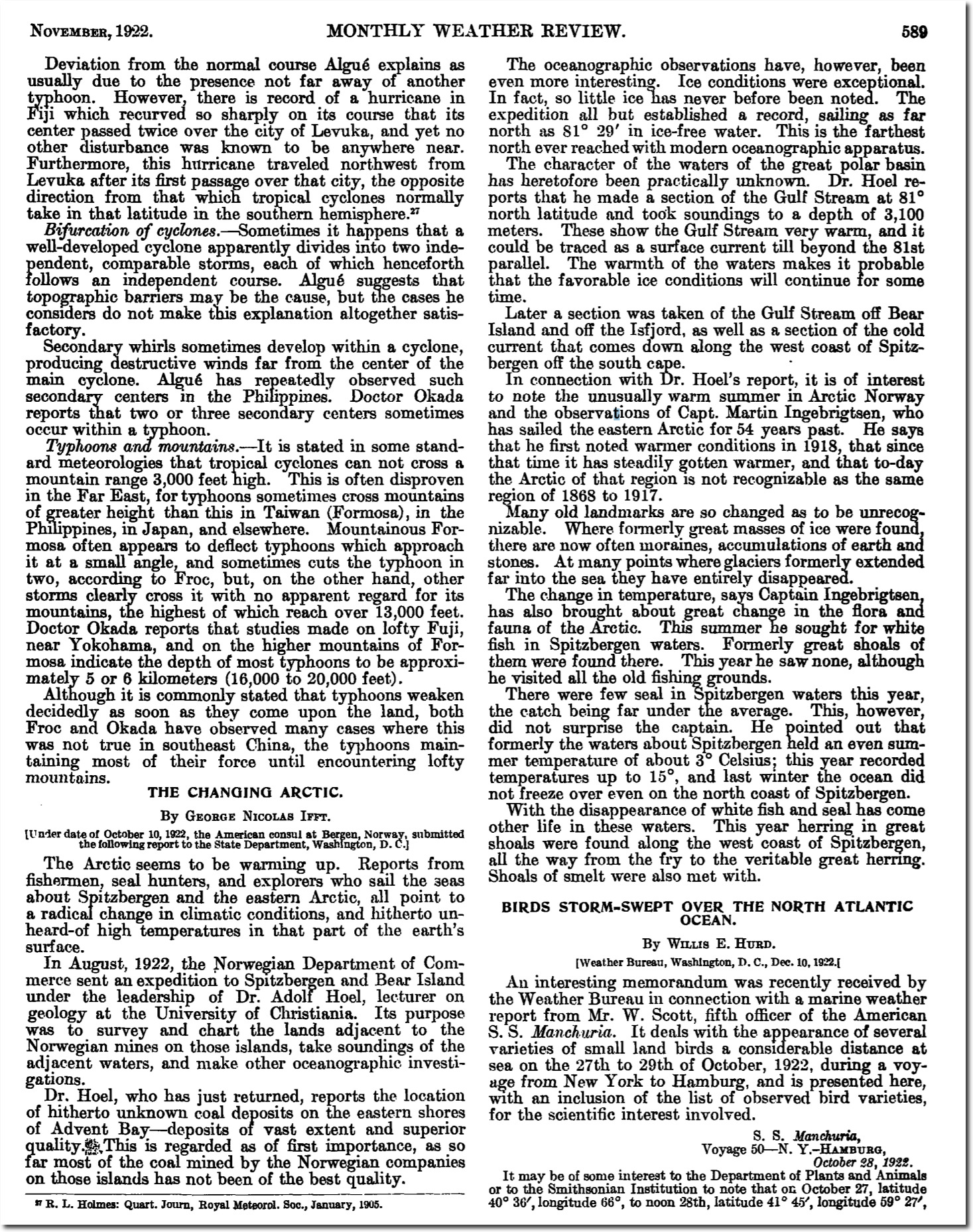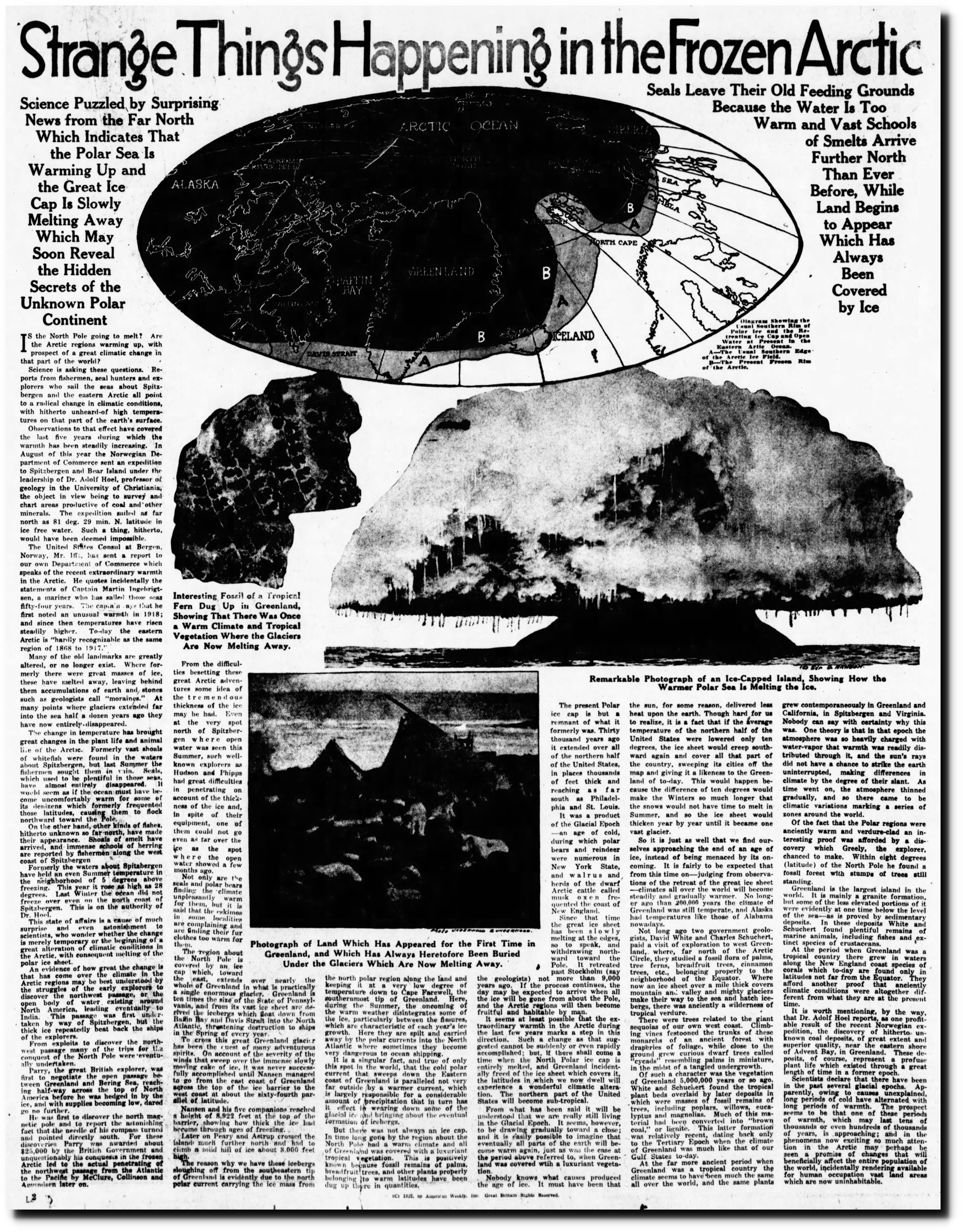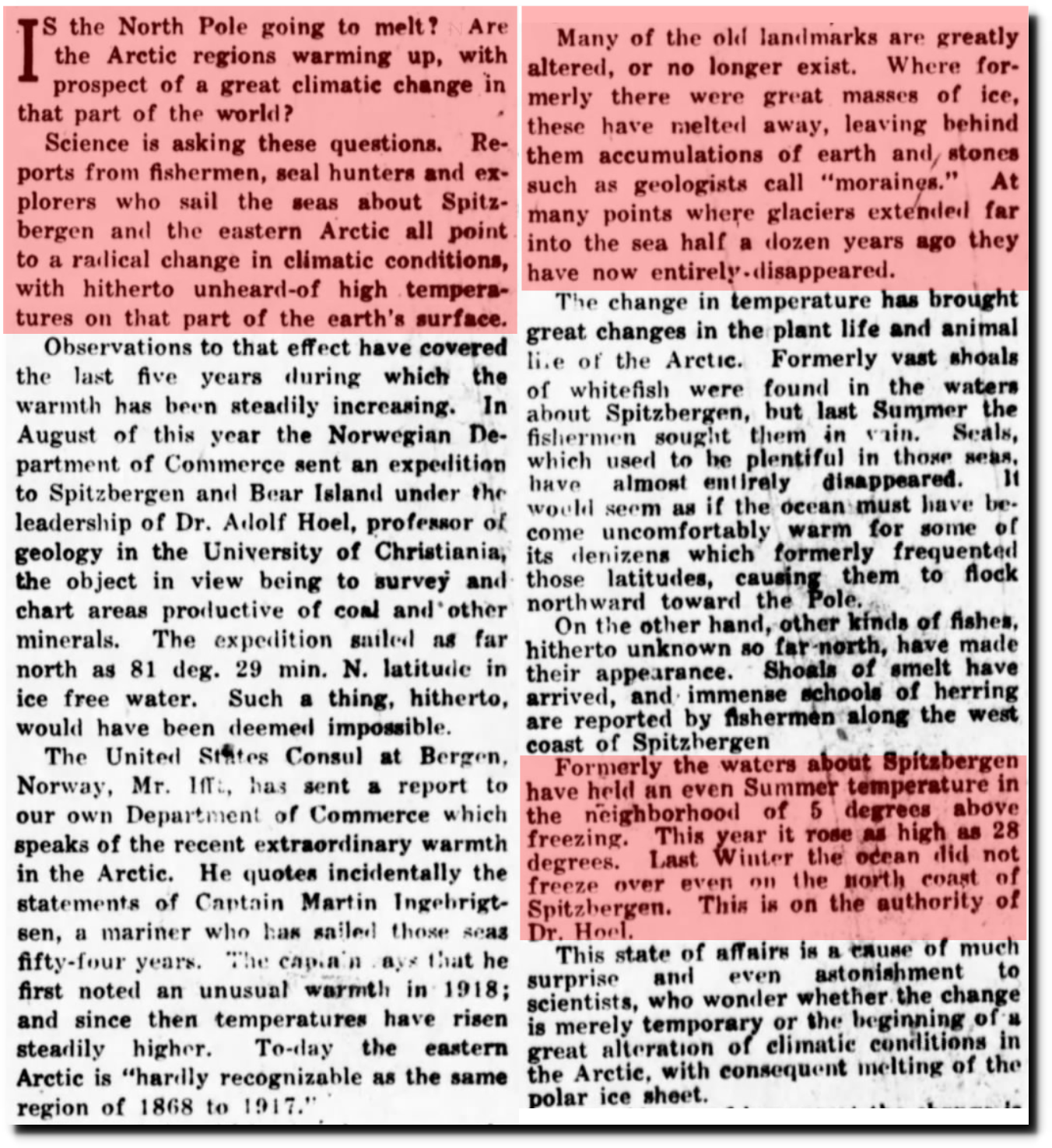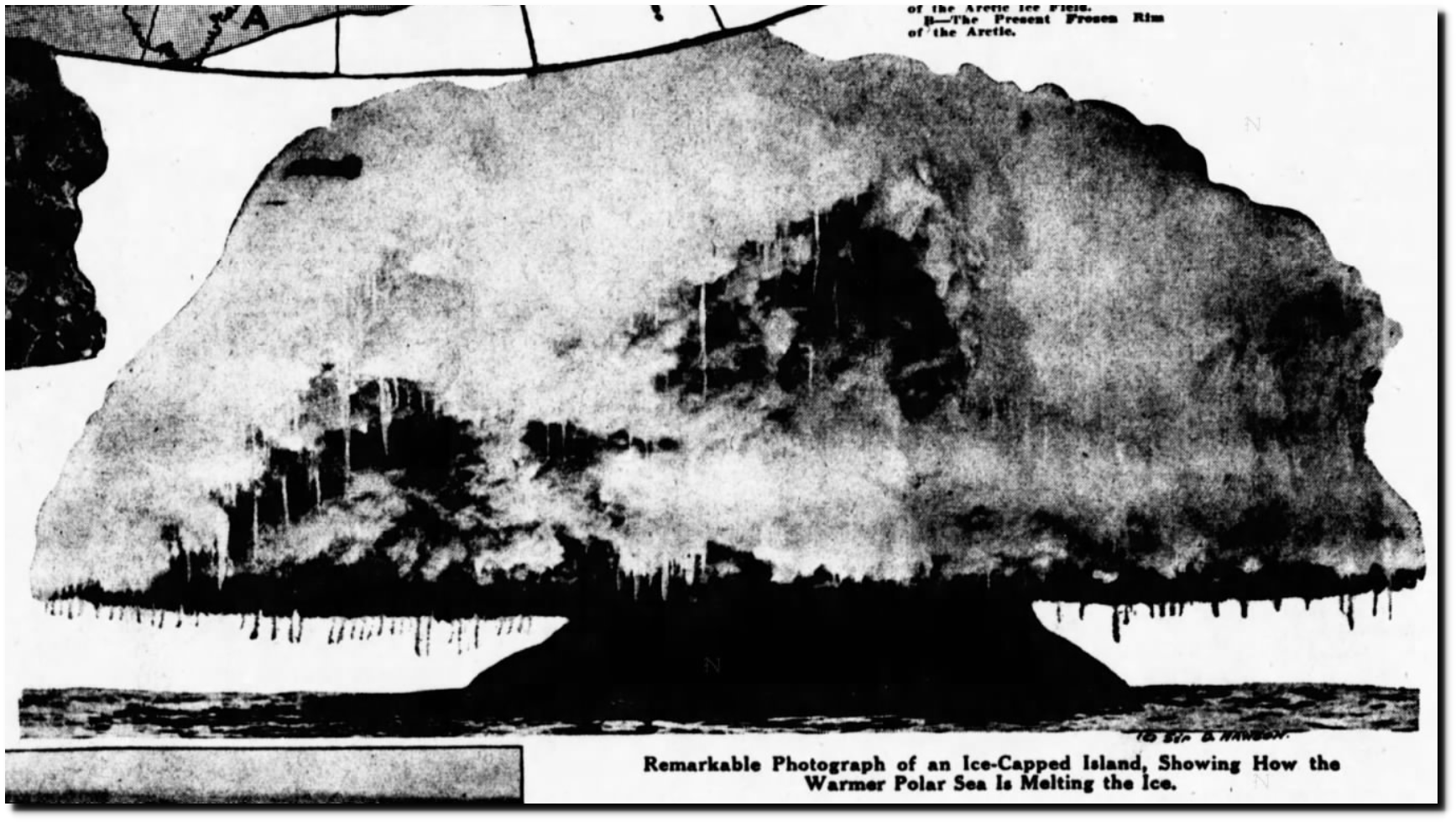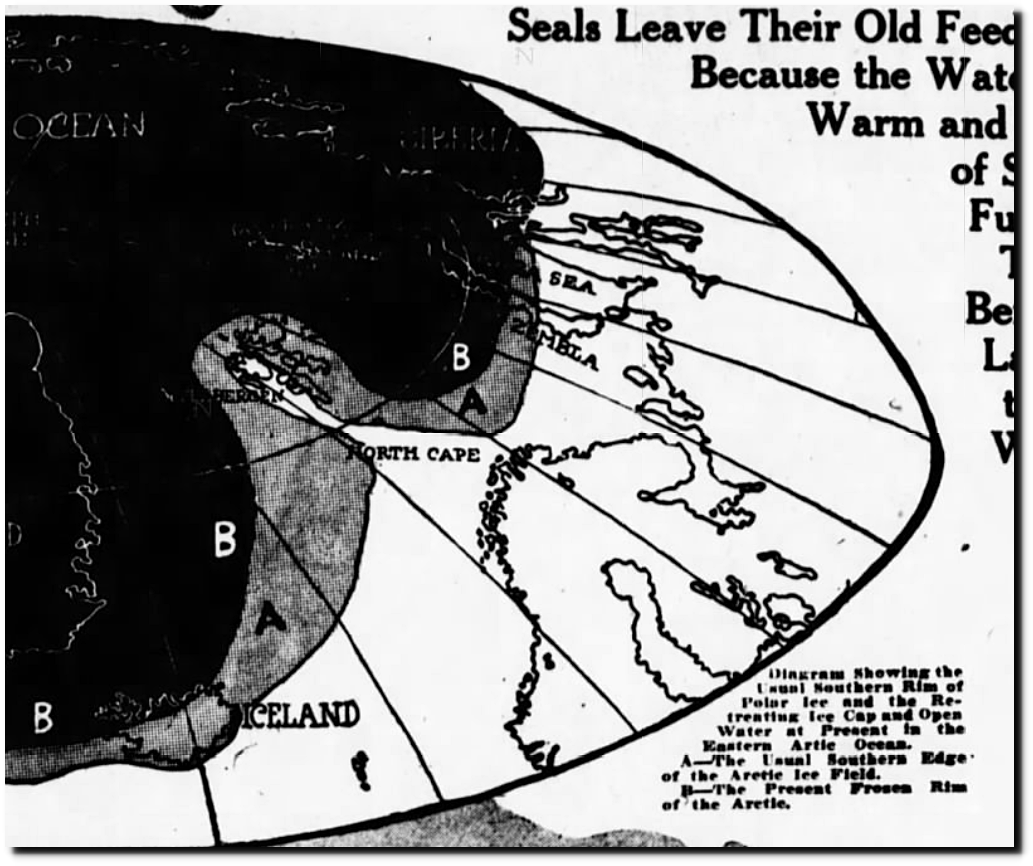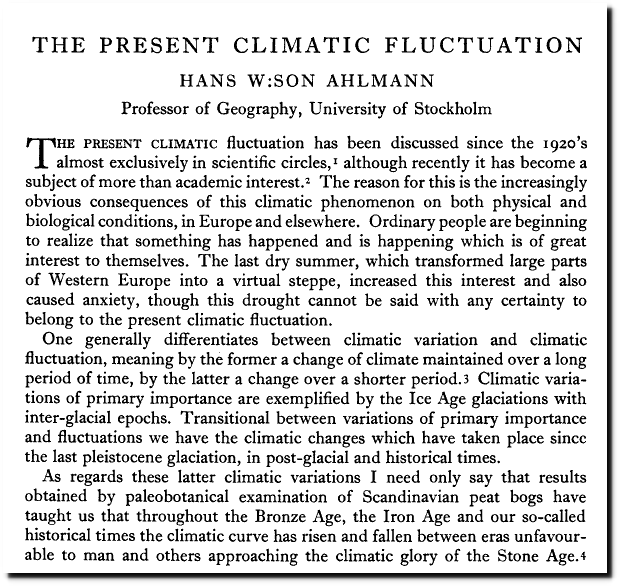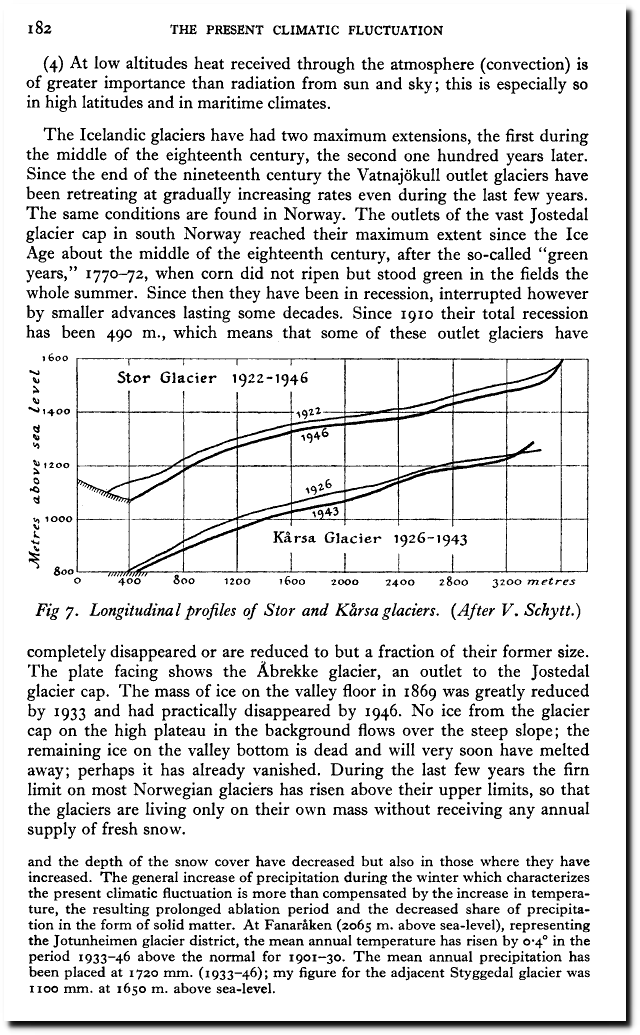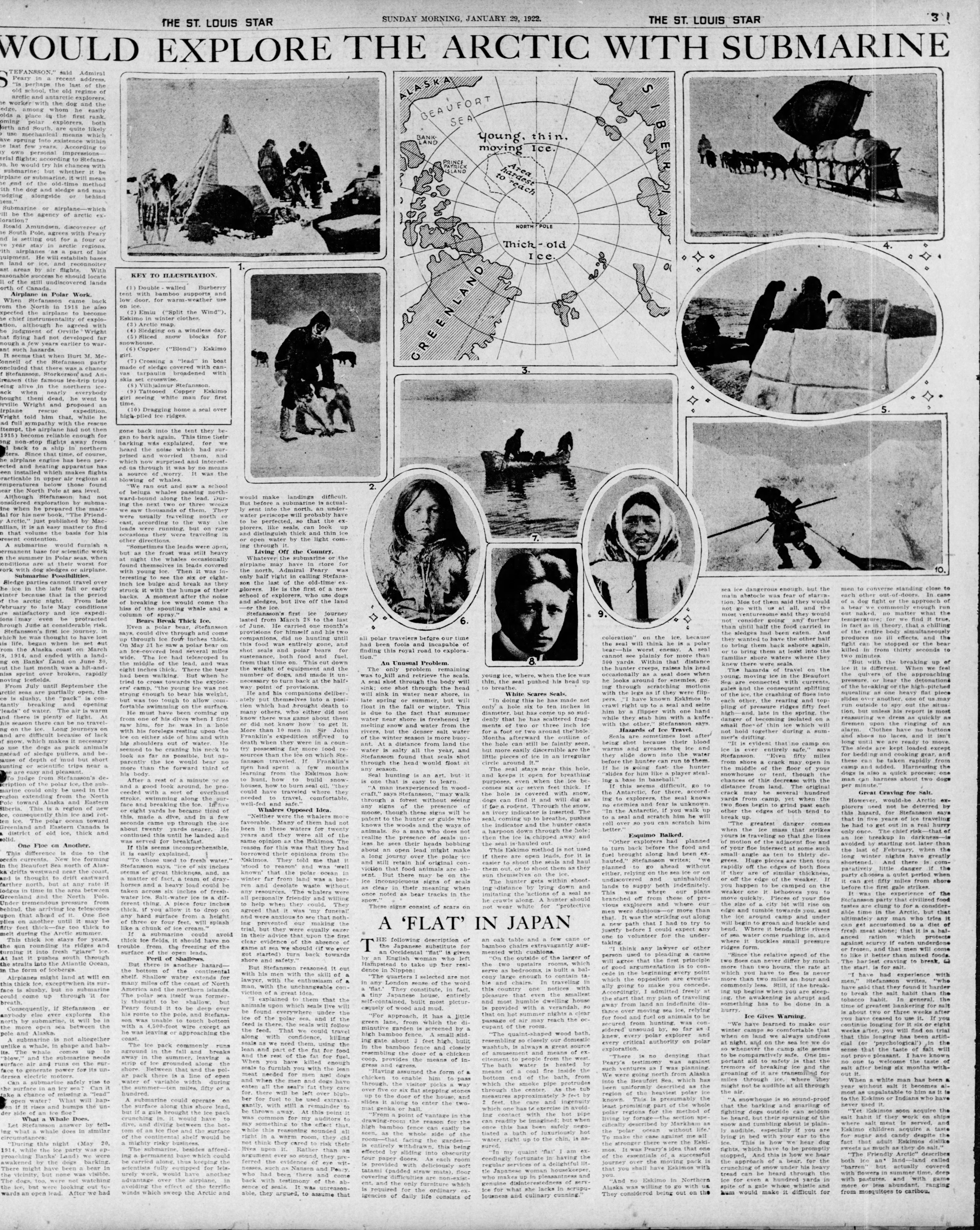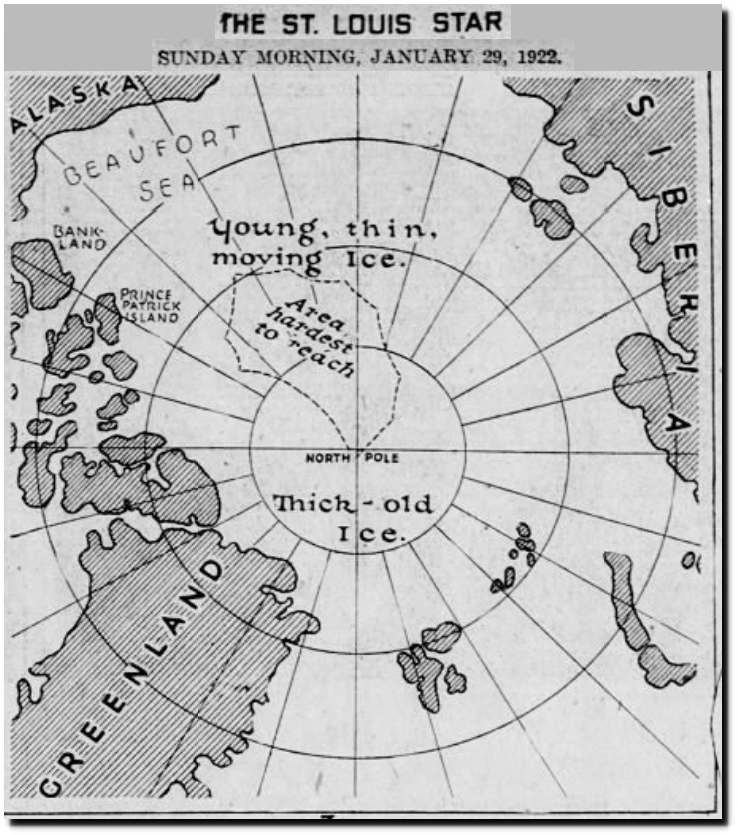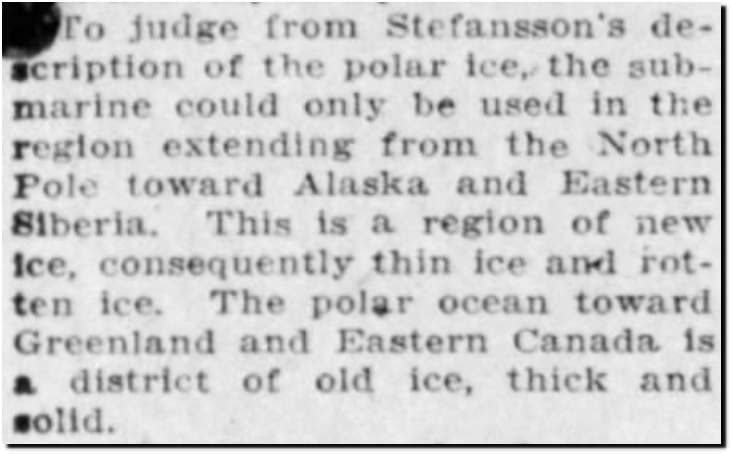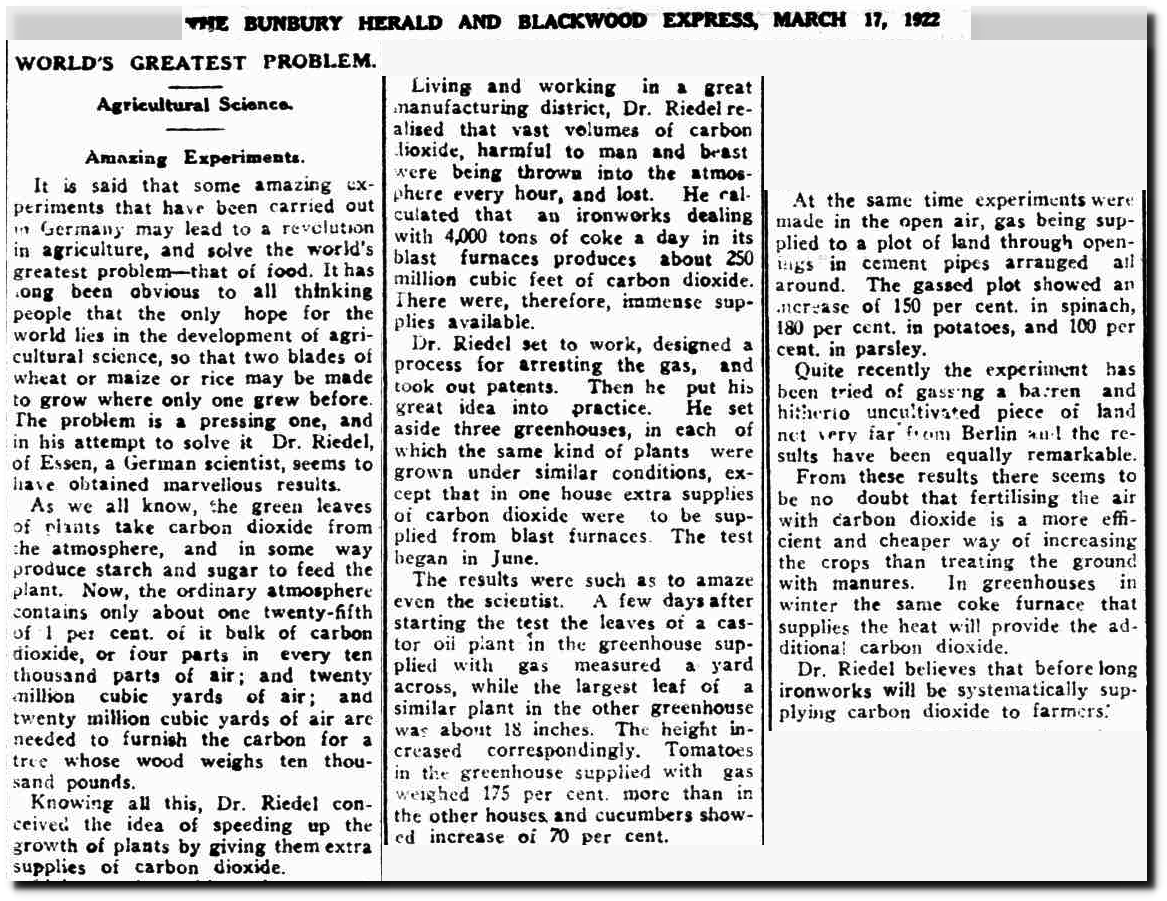A Dutch climate change expedition to Spitspergen has been scuppered by too many polar bears, which they blame on “rapidly melting ice.”
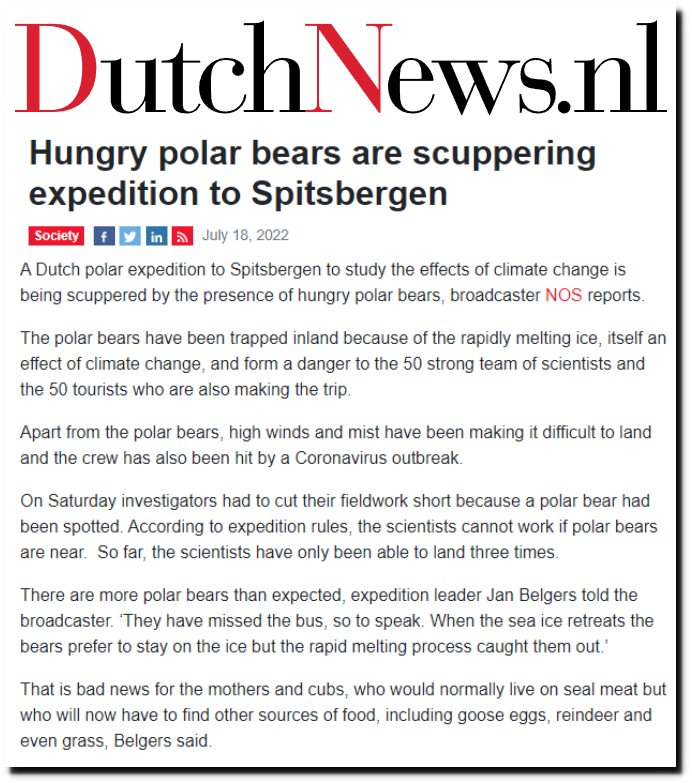
Hungry polar bears are scuppering expedition to Spitsbergen – DutchNews.nl
A century ago, there was no sea ice around Spitspergen.
NOVEMBER, 1922. MONTHLY WEATHER REVIEW
Reports from fishermen, seal hunters, and explorers who sail the seas about Spitsbergen and the eastern Arctic, all point to a radical change in climatic conditions, and hitherto unheard-of high temperatures in that part of the earth’s surface.
Many old landmarks are so changed as to be unrecognizable. Where formerly great masses of ice were found, there are now often moraines, accumulations of earth and stones. At many points where glaciers formerly extended far into the sea they have entirely disappeared.
formerly the waters about Spitsbergen held an even summer temperature of about 3° Celsius; this year recorded temperatures up to 15°, and last winter the ocean did not freeze over even on the north coast of Spitsbergen.
ftp://ftp.library.noaa.gov/docs.lib/htdocs/rescue/mwr/064/mwr-064-02-c1.pdf
03 Dec 1922, Page 63 – The Washington Times at Newspapers.com
Temperatures at Spitsbergen rose more than 7C from 1908 to 1938.
The Present Climatic Fluctuation on JSTOR
Much of the the Arctic had young, thin rotten ice.
29 Jan 1922, Page 35 – The St. Louis Star and Times at Newspapers.com
Glaciers were melting all over the world.
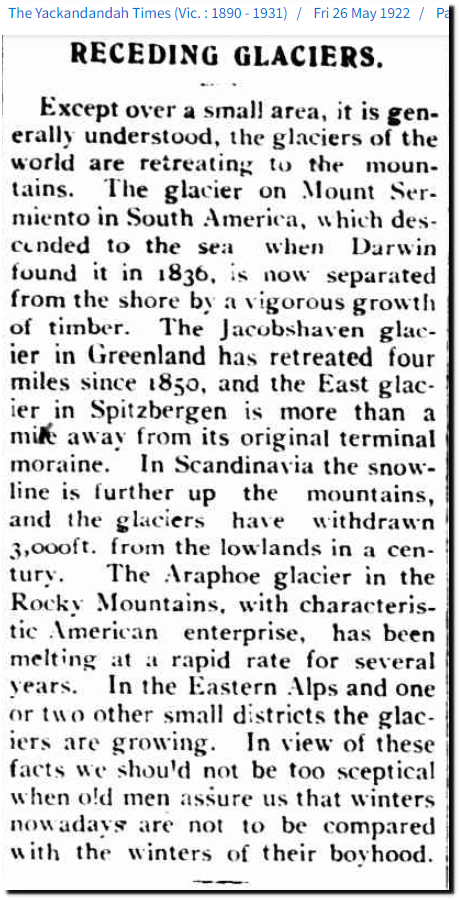
26 May 1922 – RECEDING GLACIERS. – Trove
This year there was lots of sea ice around Spitsbergen.
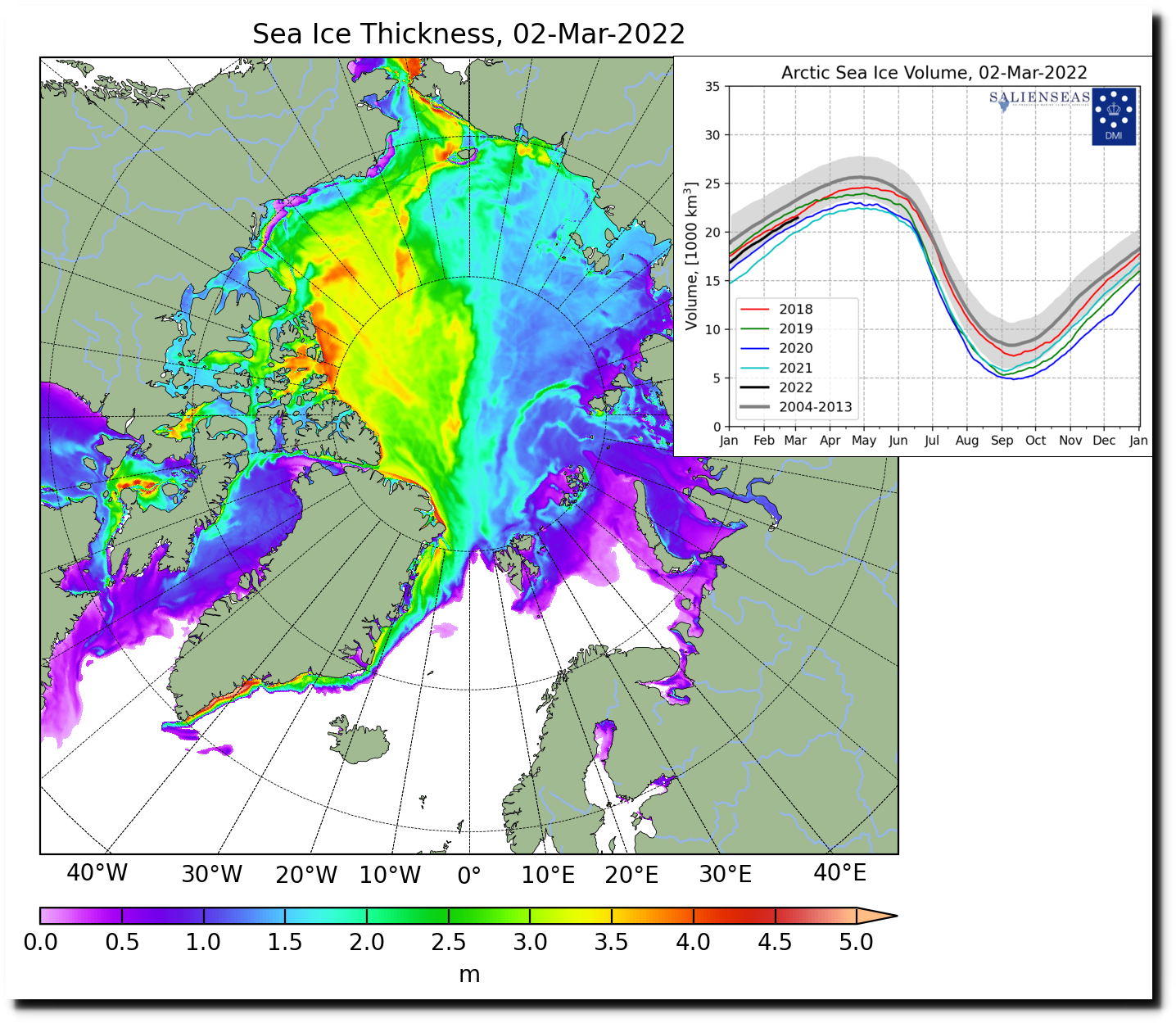
FullSize_CICE_combine_thick_SM_EN_20220302.png (1400×1213)
In 1922, scientists said the world’s greatest problem was a lack of CO2.
“WORLD’S GREATEST PROBLEM.
Agricultural Science.
Amazing Experiments.
It is said that some amazing experiments that have been carried out in Germany may lead to a revolution in agriculture, and solve the world’s greatest problem — that of food. It has long been obvious to all thinking people that the only hope for the world lies in the development of agricultural science, so that two blades of wheat or maize or rice may be made to grow where only one grew before. The problem is a pressing one, and in his attempt to solve it Dr. Riedel, of Essen, a German scientist, seems to have obtained marvelous results. As we all know, the green leaves of omits take carbon dioxide from the atmosphere, and in some way produce starch and sugar to feed the plant. Now, the ordinary atmosphere contains only about one twenty-fifth of 1 per cent. of it bulk of carbon dioxide, or four parts in every ten thousand parts of air; and twenty million cubic yards of air are needed to furnish the carbon for a tree whose wood weighs ten thousand pounds. Knowing Knowing all this, Dr. Riedel conceived the idea of speeding up the growth of plants by giving them extra supplies of carbon dioxide.”

